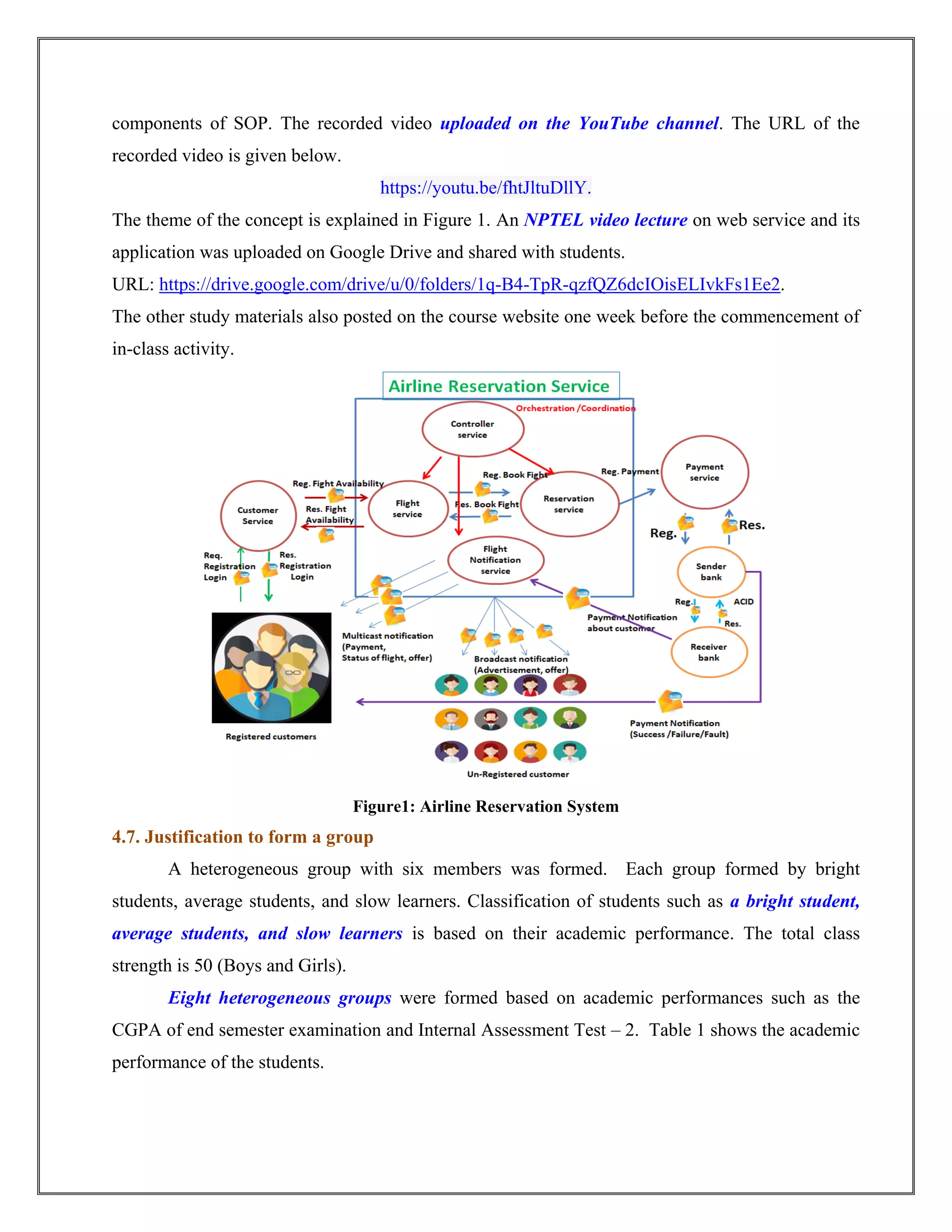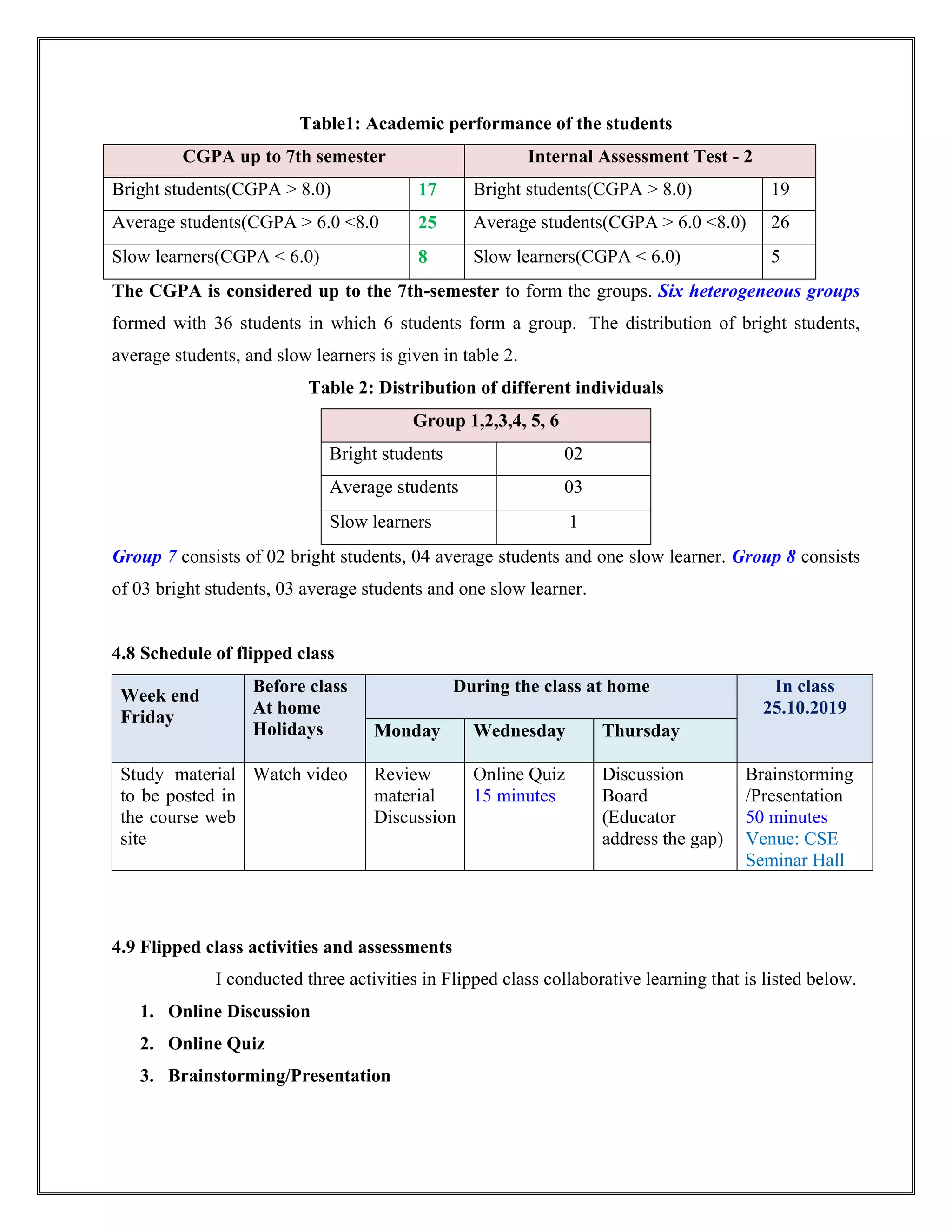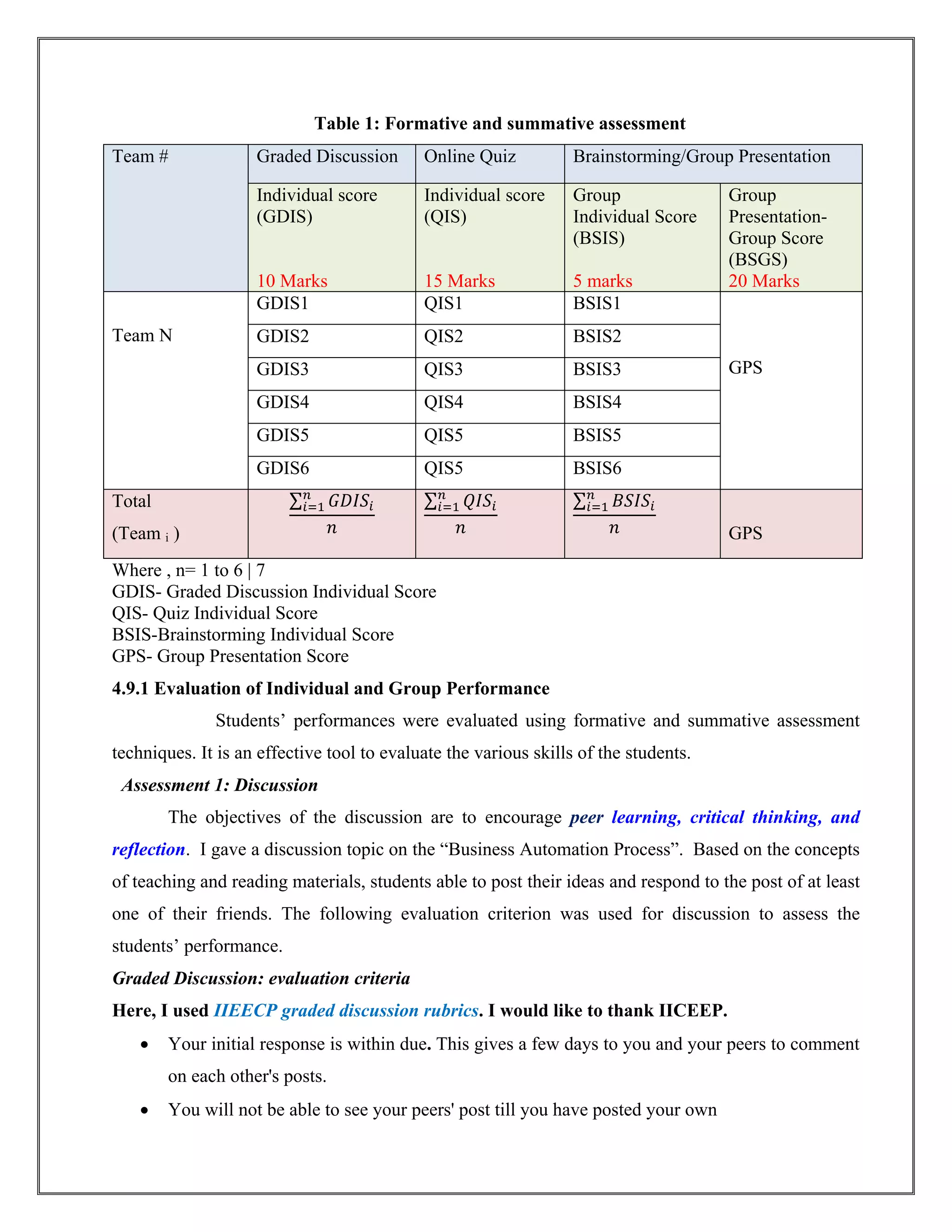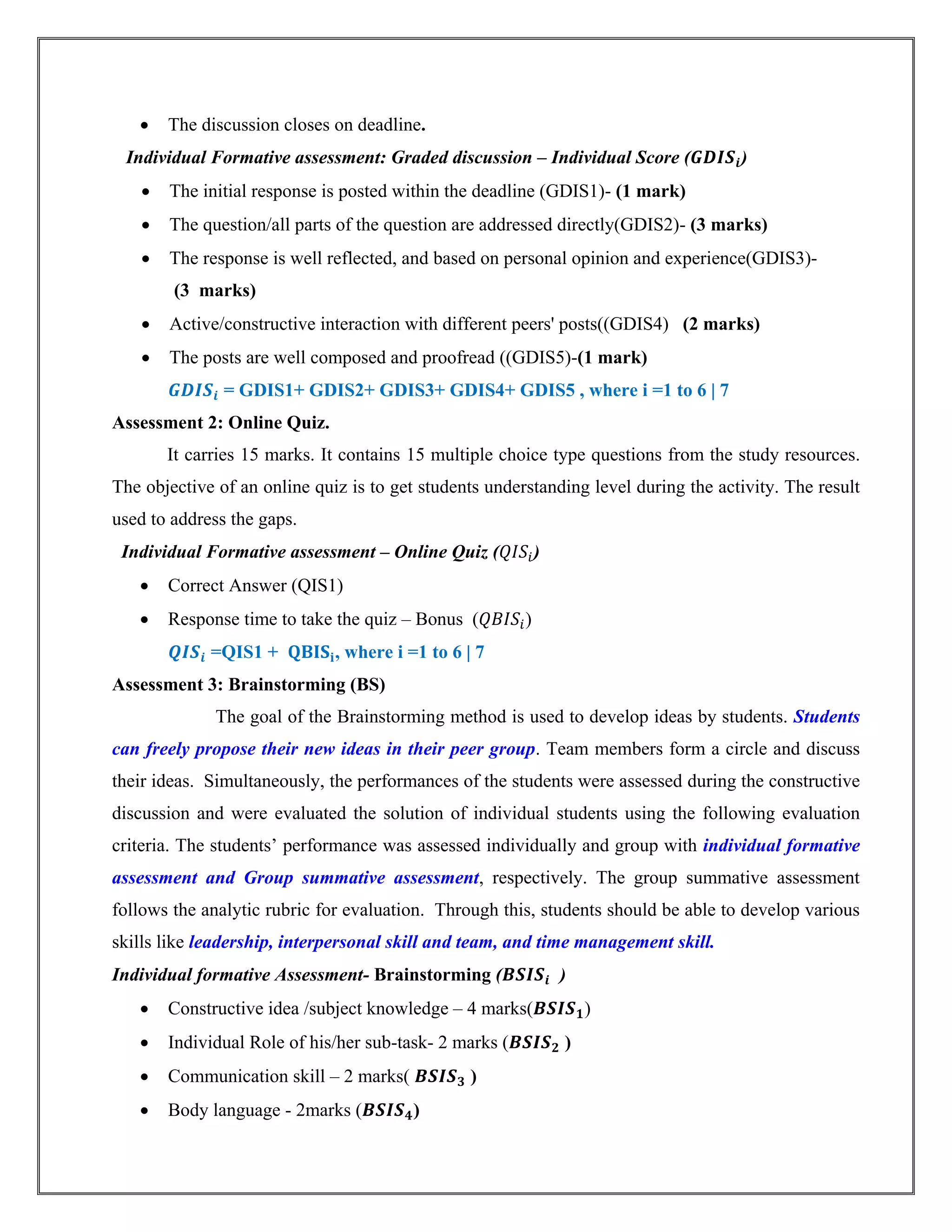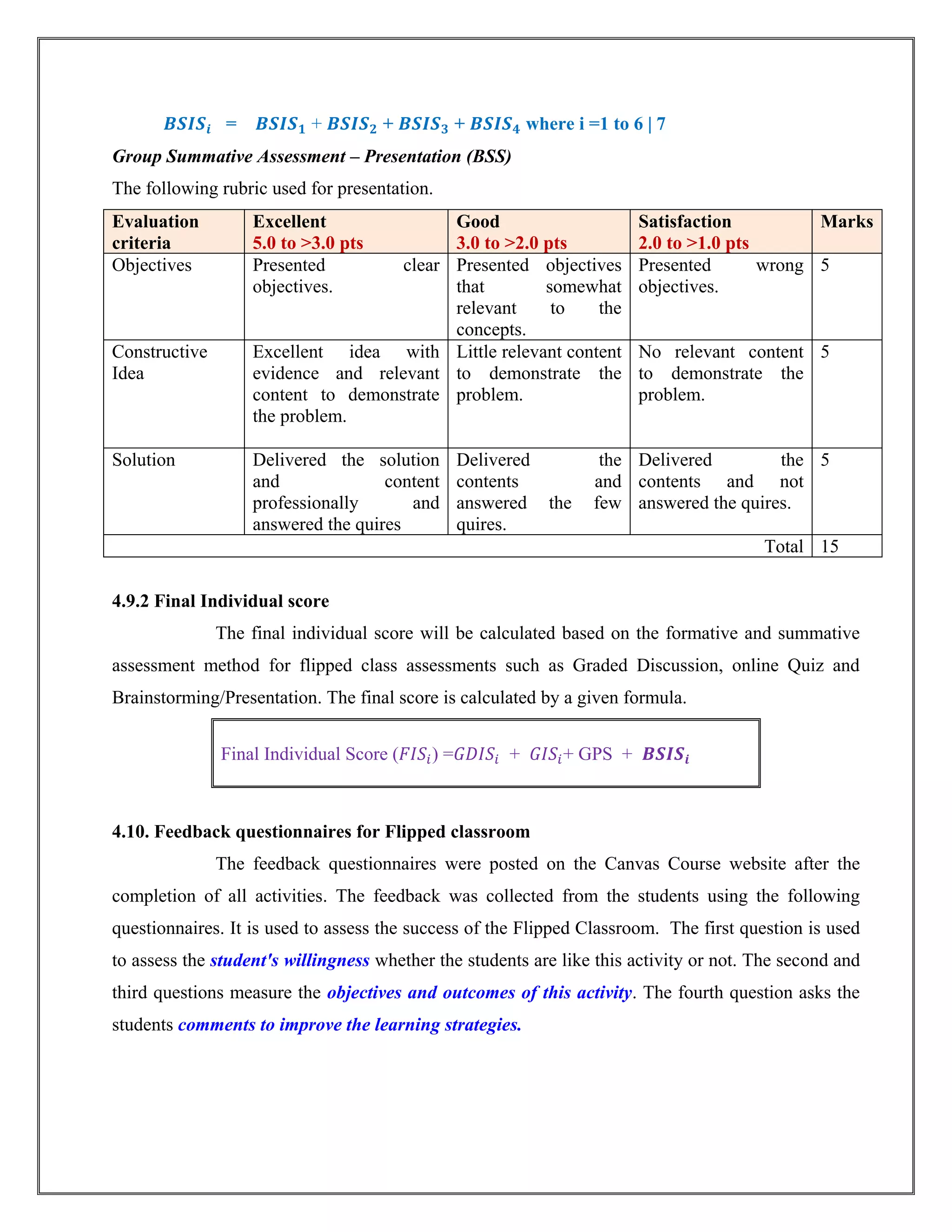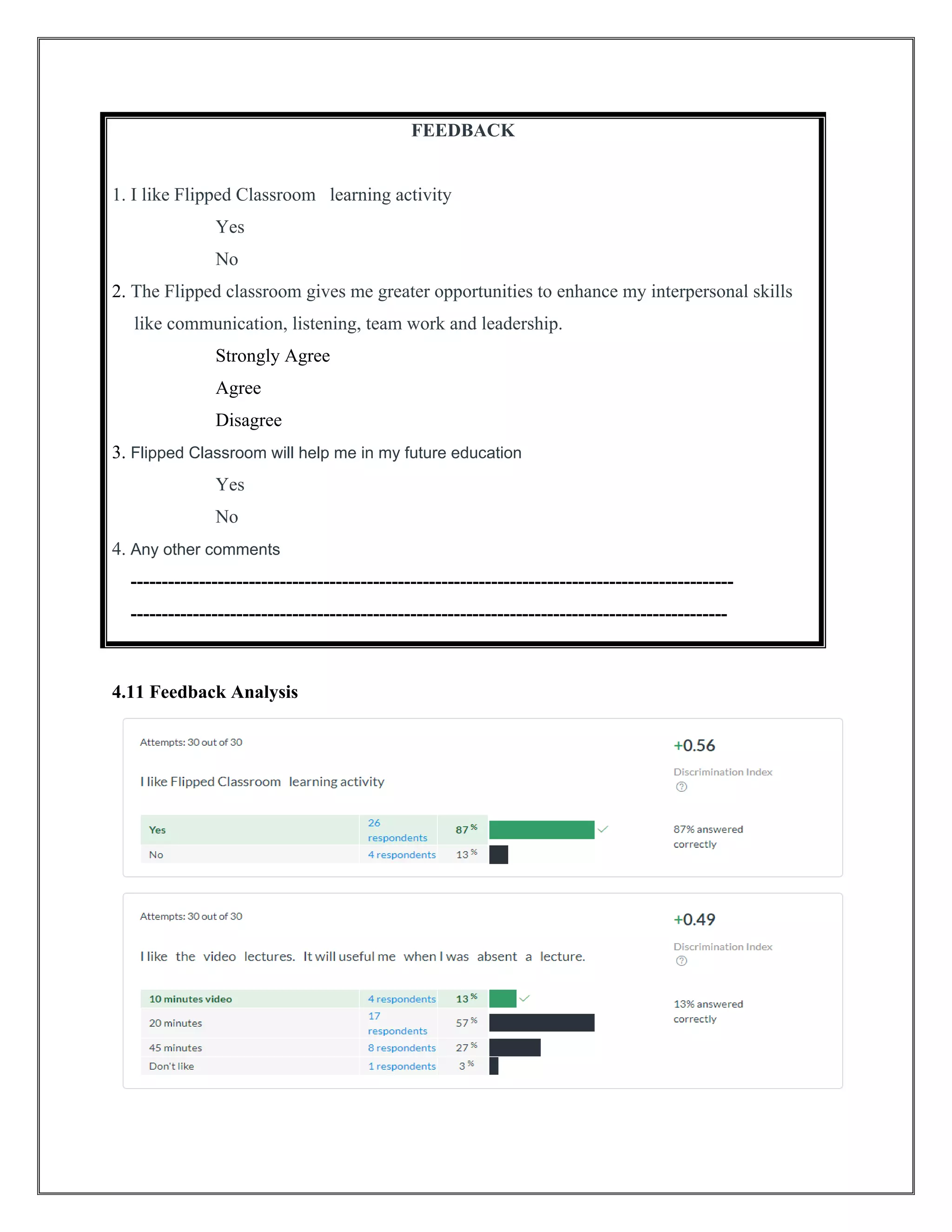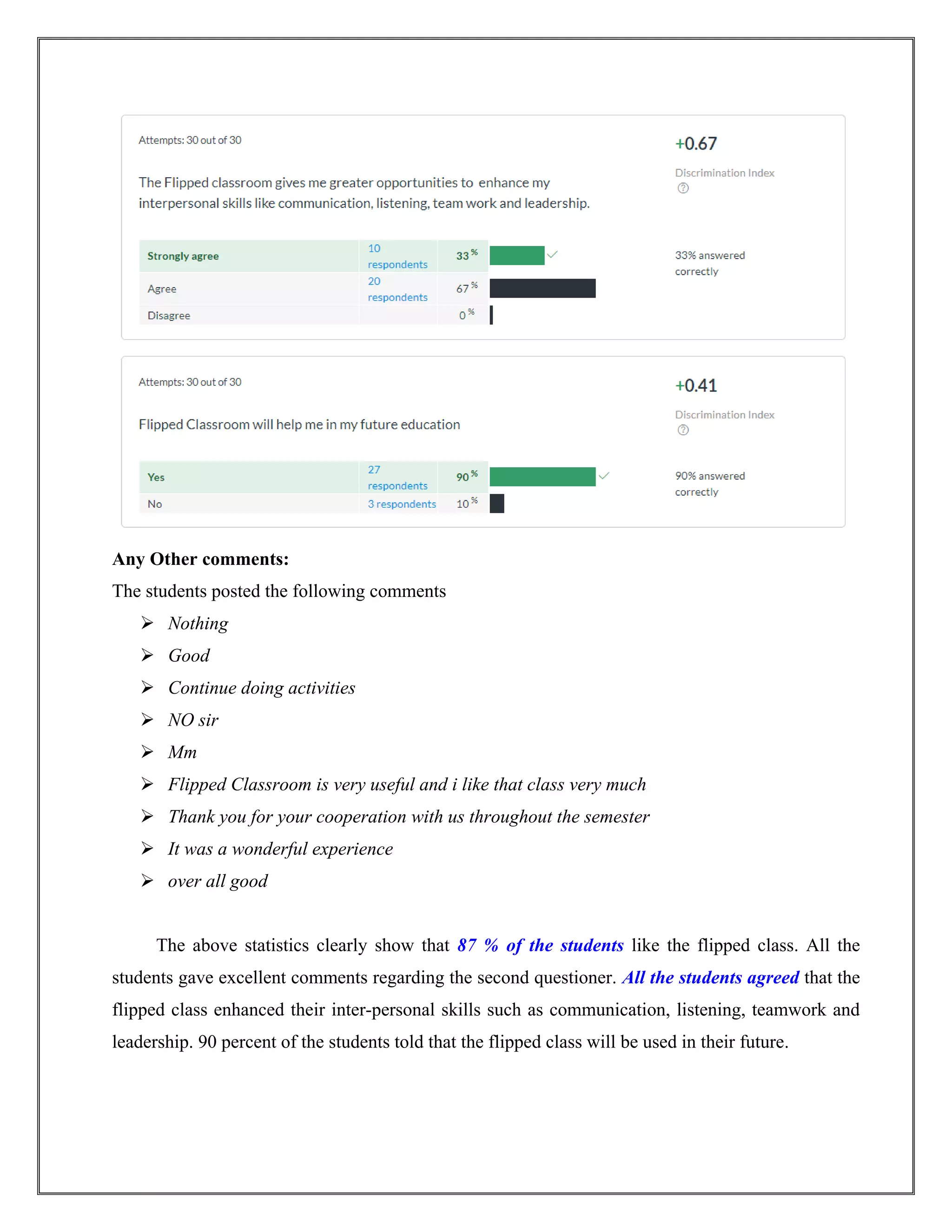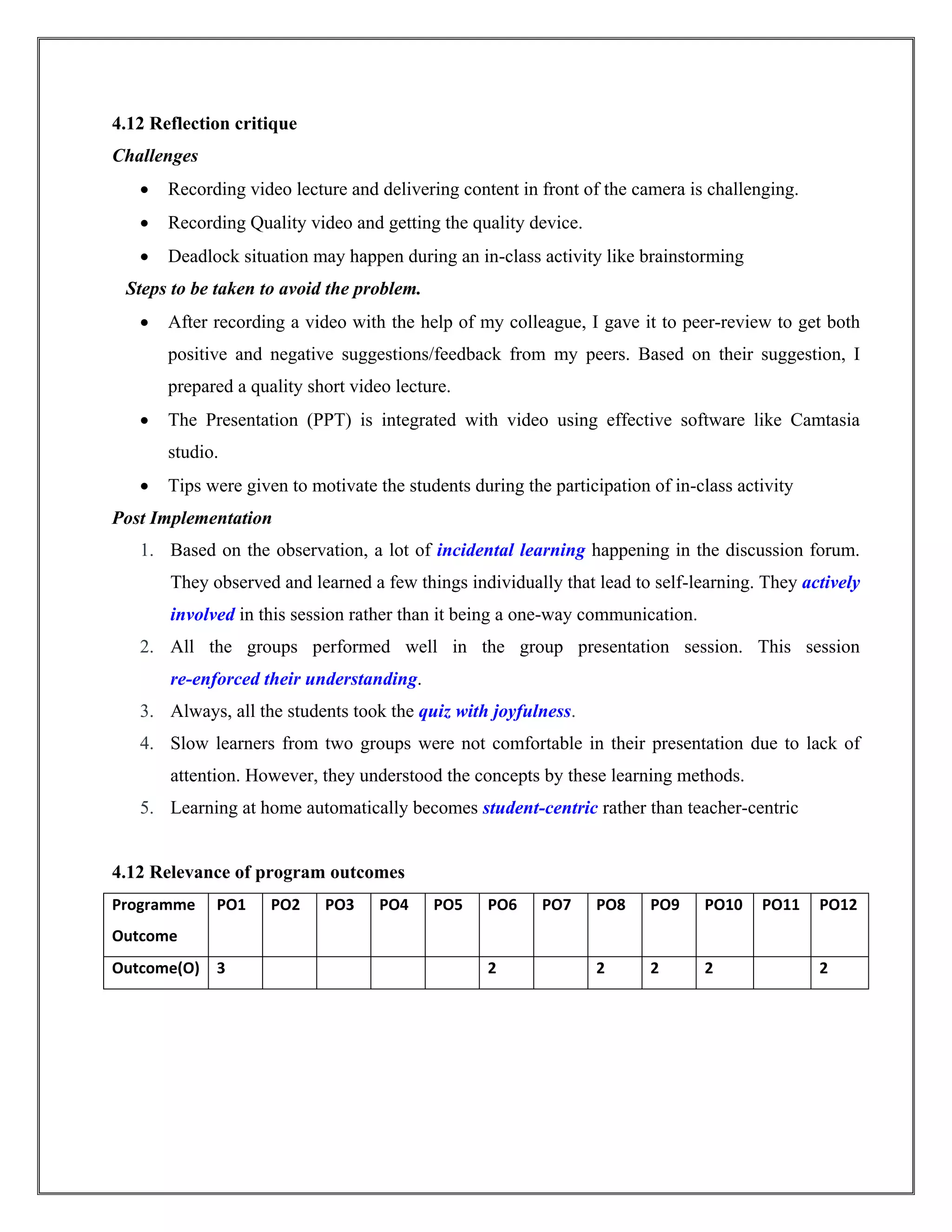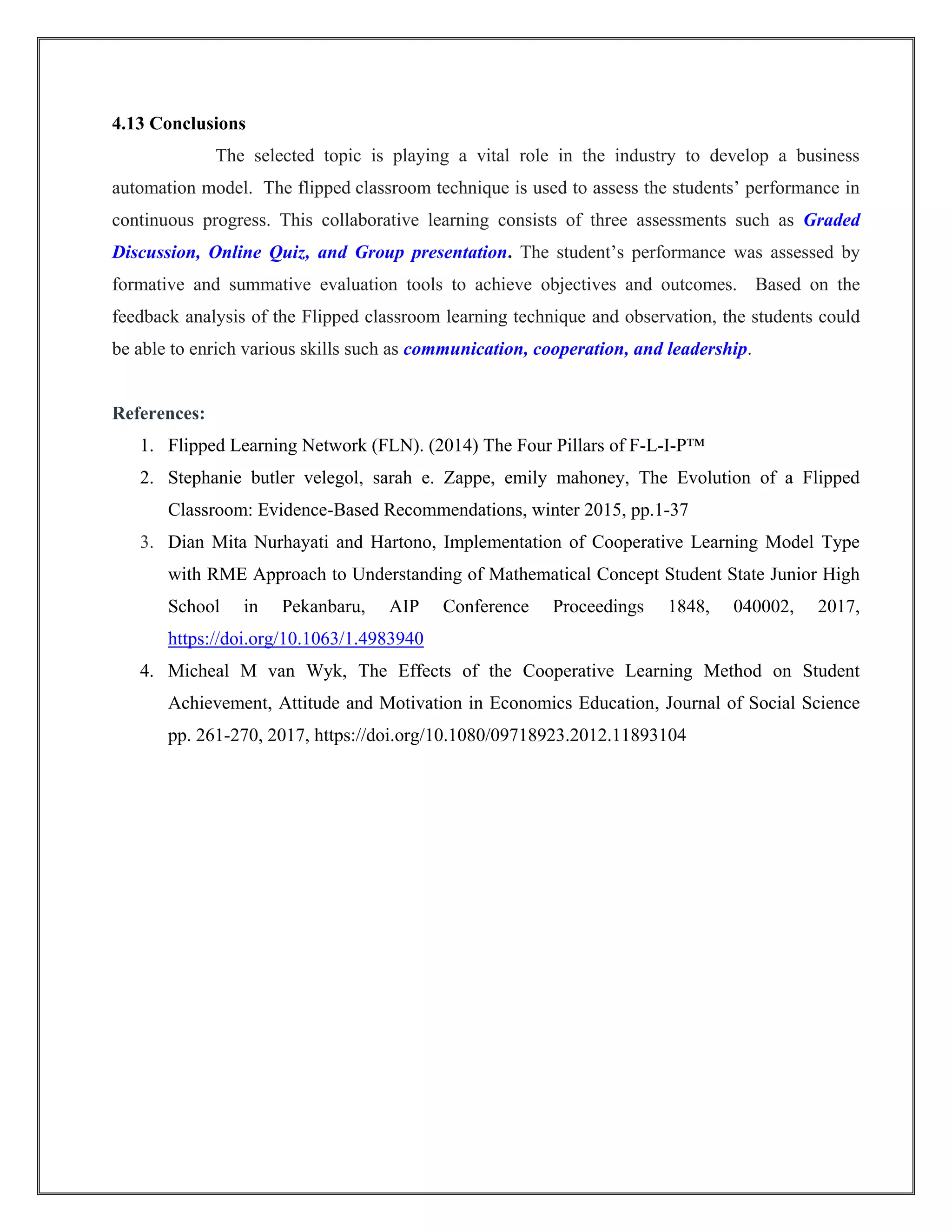This document outlines a flipped classroom collaborative learning session on web services and their applications conducted by Dr. M. Kaliappan. Students were divided into heterogeneous groups and assigned pre-class study materials including a video lecture. During class time, groups participated in discussion, an online quiz, and presented solutions to a business automation case study. Students' individual and group performance was continuously assessed using rubrics. The goal was to enhance students' communication, problem-solving, and independent learning skills for career success in fields like software development.

![4. Topic: Web service and its applications
4.1 Objectives
To enhance communication, listening, Self-confidence and problem solving skills
To describe the Service Oriented Principles.
To apply Service Oriented Principles to develop a business automation system
4.2 Outcome (O) (At the end of the learning technique, the students will be able to)
Describe the Service Oriented principles to develop web service based applications.
4.3 Justification for choosing the topic
Service-oriented Principles SOP geared towards recent advancement in
industries/organization. SOP are core parts of my course namely, Service-Oriented Architecture.
SOP enables software integration with legacy systems. The prime industries like Oracle, IBM,
Microsoft, and Infosys endeavor to enhance their legacy systems with SOP to develop an
automation process. The objective of collaborative learning is to enhance communication, creativity
and problem-solving skills. This domain helps the students to get placement in core fields.
A collaborative learning technique consists of a series of assessments that enable students to
master the given concept/topic. It emphasizes effective group interaction among students to master
particular concepts. Also, this learning technique enhances the students with communication, and
problem-solving skills. It is not more attention in part of the syllabus and examination because the
textbook contains only five pages. So, I consider this topic is independent study. Since all the
students like autonomy and want to learn their own
4.4 Flipped classroom
Flipped classroom is a pedagogical approach [1] in which traditional content delivery moves
to an individual learning process, and the group activity is transformed into a dynamic, interactive
learning environment where the instructor just guides the learners to apply their creative thinking to
provide a fruitful solution in the course content. It provides more benefits than traditional direct
content delivery.
4.4.1 Benefits of flipped classroom
It promotes peer interaction among students and collaboration skills
It encourages bright students’ engagement.
It provides increased individual attention.
It makes independent learning rather than teaching.](https://image.slidesharecdn.com/flippedclass-collaborativelearning-kaliappan-rit-191109102001/75/Flipped-class-collaborative-learning-kaliappan-rit-2-2048.jpg)
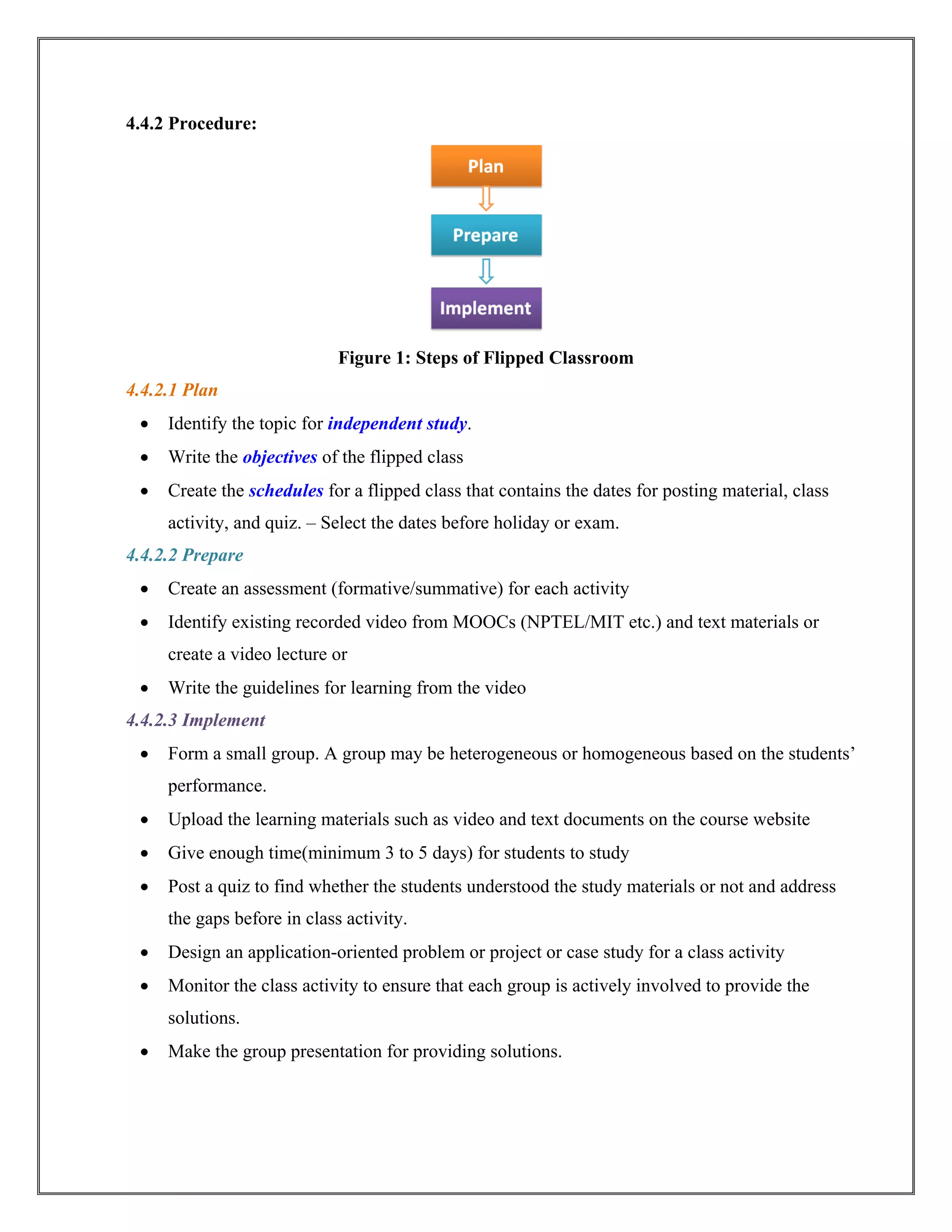
![(Credit: Google Image)
Students can watch the online lectures or read suggested study material (before class) and complete
problem sets & preparing for quizzes/ exams (after class)[1]
4.5 Ground Rule
Learning materials such as NPTEL Video on Web service and its application uploaded on
the course website.
Open to suggestions, sensitive feelings and concerns
Each activity such as online quiz, discussion and group presentation contains separate
assessment and evaluation criteria.
Final score of a team will be calculated as the sum of individual score and team score.
Plagiarism is not allowed. If found, the student would be given zero to particular
assessment.
4.6 Concept teaching/Video lecture
Initially, a lecture on Service-Oriented Principles was delivered to students based on
the ARCS model. The context or importance of Service-Oriented Principles in industries for
achieving the business automation process is addressed that ensure the attention of the students.
Then, a concept in relevance to Airline System was explained. A Class poll activity was conducted
in the mid of the lecture to alert the lack of student’s attention. The students were asked to list the
key service-oriented principles such as web services, Orchestration, reusability, operations etc in
the Airline System that boost the confidence of individual students. Based on this lecture, students
should be able to design web services for the airline system based on service-oriented
principles. . A video lecture was created to describe the orchestration that is one of the core](https://image.slidesharecdn.com/flippedclass-collaborativelearning-kaliappan-rit-191109102001/75/Flipped-class-collaborative-learning-kaliappan-rit-4-2048.jpg)
